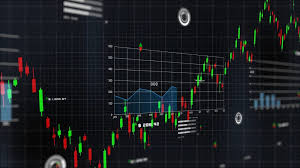
The Essential Elements of a Crypto Trading Framework
Cryptocurrency trading has transformed the landscape of investing, offering both unprecedented opportunities and notable risks. As traders delve into this dynamic market, having a solid framework becomes imperative. This Crypto Trading Framework visit website will explore the essential components of an effective Crypto Trading Framework, providing insights into strategies, tools, and best practices to navigate the crypto environment successfully.
Understanding the Basics of Cryptocurrency Trading
Before diving into the intricacies of trading, it’s important to understand what cryptocurrencies are. Cryptocurrencies are digital or virtual currencies that use cryptography for security and operate on a technology called blockchain. Unlike traditional currencies, they are decentralized, meaning they are not controlled by any central authority. Popular cryptocurrencies include Bitcoin (BTC), Ethereum (ETH), and Ripple (XRP).
Essential Components of a Crypto Trading Framework
Creating an effective trading framework involves various components that interact to help make informed trading decisions. Here are some essential elements:
1. Market Analysis
Market analysis is the cornerstone of any trading strategy. There are two primary types of market analysis: fundamental analysis and technical analysis. Fundamental analysis involves evaluating the underlying factors that could affect a cryptocurrency’s value, including its technology, team, and market demand. On the other hand, technical analysis involves studying historical price movements and trading volumes to identify patterns and trends.

2. Trading Strategies
There are various trading strategies that traders can adopt, depending on their risk tolerance and market outlook. Some popular strategies include:
- Day Trading: Involves making short-term trades to capitalize on small price movements throughout a single day.
- Swing Trading: Focuses on holding positions for several days or weeks to benefit from expected price swings.
- HODLing: A long-term investment strategy where traders hold onto their assets regardless of market fluctuations, believing they will increase in value over time.
3. Risk Management
Effective risk management is crucial to preserving capital and ensuring long-term success in crypto trading. Traders should define their risk tolerance and set clear stop-loss orders to limit potential losses. Diversifying the portfolio and only risking a small percentage of capital on any single trade are also strategies to manage risk effectively.
4. Trading Tools
A variety of tools and resources are available to assist traders in executing their strategies efficiently. Some essential tools include:
- Cryptocurrency Exchanges: Platforms like Binance, Coinbase, and Kraken allow traders to buy, sell, and exchange cryptocurrencies.
- Charting Tools: Tools such as TradingView provide advanced charting options, allowing traders to analyze price movements and market trends visually.
- Portfolio Trackers: Applications that help traders monitor their investments in real-time, providing valuable insights into overall performance.

Developing a Personal Trading Plan
A well-structured trading plan outlines specific goals, risk management strategies, and the methods you’ll employ to analyze and execute trades. The plan serves as a roadmap, helping you remain disciplined and focused even amidst the volatile nature of the crypto market. Your trading plan should include:
- Defined objectives (short-term vs. long-term)
- Entry and exit strategies
- Details on how you will perform market analysis
- Risk management rules
Continuous Learning and Adaptation
The cryptocurrency market is continuously evolving, driven by new technologies, regulatory changes, and investor sentiment. As such, successful traders emphasize the importance of continuous learning and adaptation. This can involve staying updated with news and trends, participating in online forums, and exploring courses or materials focused on advanced trading strategies.
Conclusion
In conclusion, a comprehensive Crypto Trading Framework involves various components that assist traders in navigating the complexities of the cryptocurrency market. By incorporating market analysis, effective trading strategies, risk management techniques, and the use of technological tools, traders can increase their chances of success. Additionally, developing a personal trading plan and committing to continuous learning and adaptation will equip traders to stay ahead in this fast-paced, ever-changing environment.
As you embark on your crypto trading journey, remember that while the rewards can be significant, the risks are equally present. Proceed with caution, and ensure you’re well-equipped with a solid trading framework to guide your decisions.

